A lot of people are facing similar challenges with working remotely and having a spouse and / or kids doing the same. I have had many discussions about home office renovations with a variety of people over the last 8 months. Are you considering upgrading your space? If so, here are some things to consider:
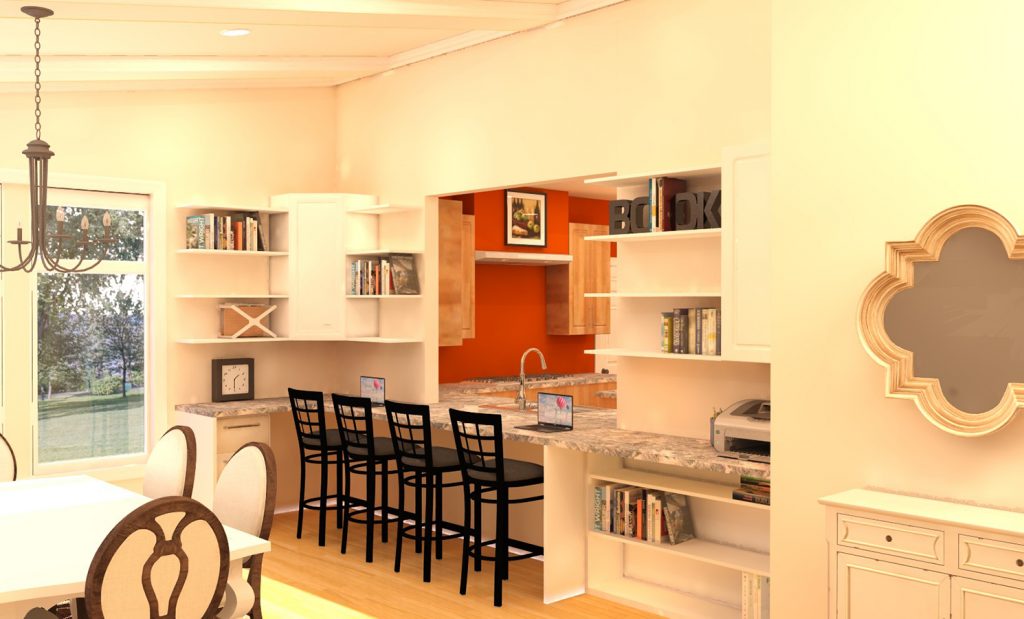
Designated work areas and schedule
The most important thing to do is to set up designated working areas and boundaries. If you and your spouse / children are working in the same room, make sure that you are all on the same page as to policy for noise. There are many options and designs for speakers or headphones. Note that the noise cancelling headphones will limit your ability to hear yourself talk – so this typically will lead to a natural response of you talking louder than normal. Setting rules, just like you would in a classroom or office will help minimize conflicts in the future. Perhaps all phone calls need to be taken in a different area of the house for instance. You may also want to adjust your working hours to make sure your conference call with a client is not at the same time as band practice for your eighth grader that is learning to play trumpet.
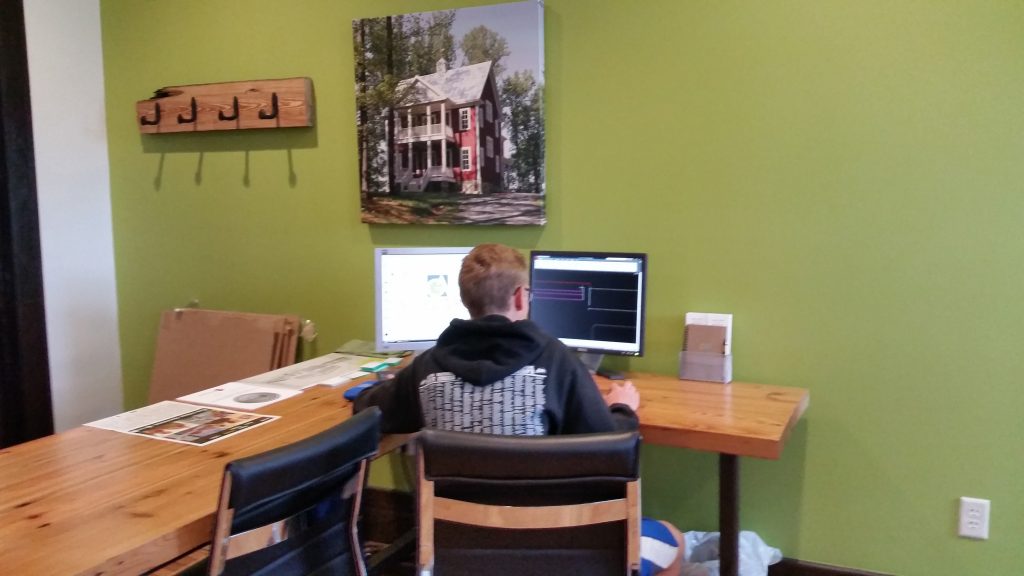
Acoustical Considerations
If your home and family will allow for work spaces to be spread around in different rooms, then there are some good acoustic solutions that you could add to improve performance. First at the door if you could add a “sock” along the bottom so noise transfer can be minimized. A “sock” in this case is a fabric filled with rice or beans (if you make it yourself) that is the length of the door. Adding weather stripping to interior doors is also an option to tighten up the door gaps which allow noise to escape around the door when closed. I have also found that many residential doors are hollow core which do not offer the same sound deadening that solid core doors provide, so replacing particular doors could be an option to improve sound transfer.
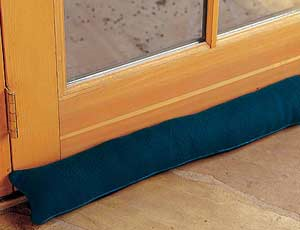
Comfort and acoustics
If you are working in a space with a door that has an attic above you, adding another layer of insulation across that space will help keep the sound in the room (and improve your comfort). If you are working in a basement space adding fiberglass sound insulation in the floor joists above your head is a great idea. If the space does not already have a finished ceiling of course. If you have the option to add a finished ceiling, acoustic tile ceilings are a great option for stopping noise transfer from one floor to the other. Adding insulation to the walls will help keep you more comfortable along with rugs to keep your feet off the concrete floor.
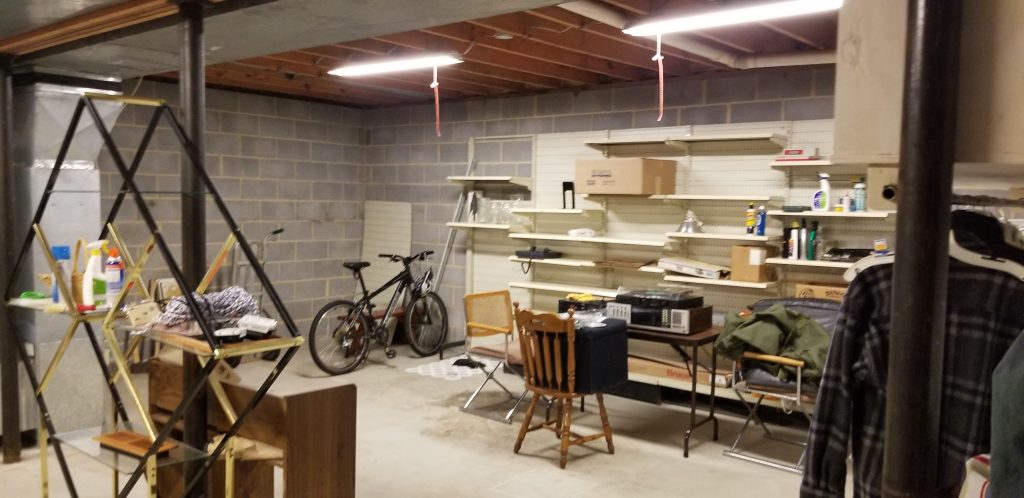
Renovation and additions
If a renovation is a possibility, there are many option for adding sound rated insulation in a wall cavity, resilient strips behind drywall, noise cancelling drywall, or even a double stud wall.
As you are planning your office at home, think about how you can also improve your home’s future value. If an addition is part of the solution, can the new office also be a future bedroom for instance. Are there ways to improve the comfort and energy-efficiency while you are renovating? Are there maintenance items that should be addressed while the contractor is on the job like a new roof or upgraded HVAC system?
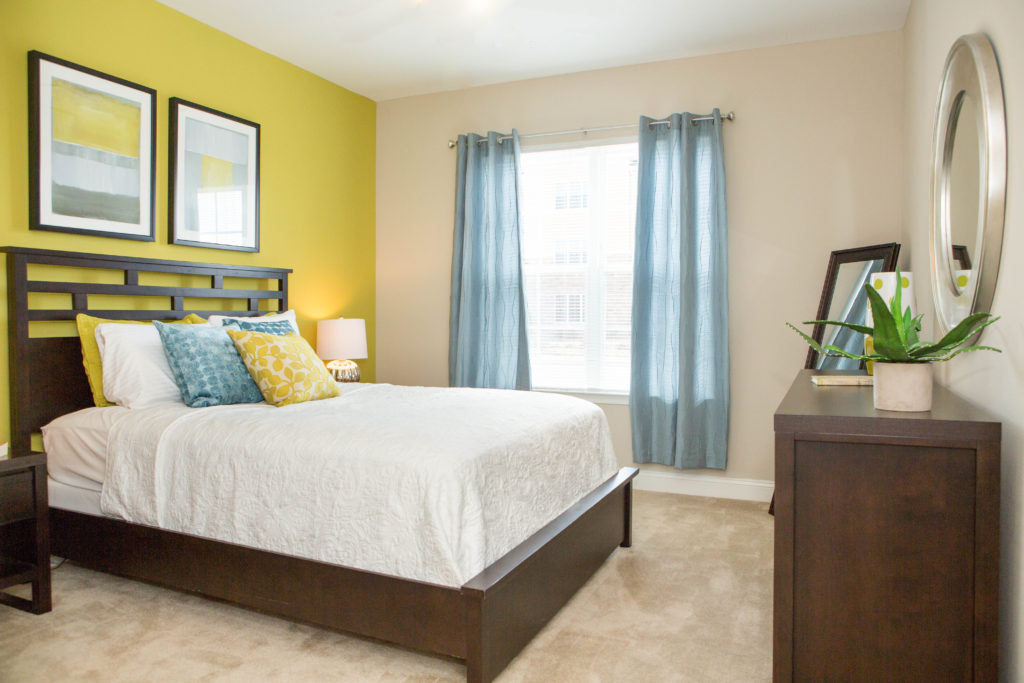
Remote working has become a new reality for many of us. Setting up an effective office space(s) in your home allows for more resilience in the future. As a workaholic having my work space convenient is critical, but for many having separation at home from work is critical for mental health. If I can help with solutions, please reach out. I am happy to share lessons learned and if you need design help, I welcome the business.




